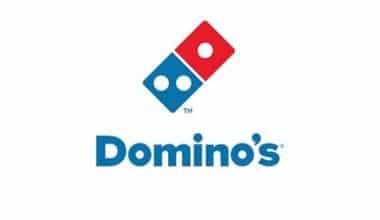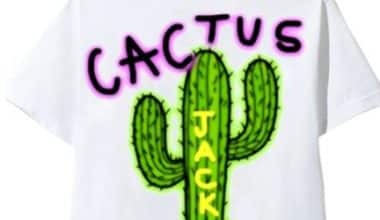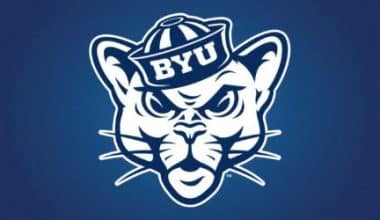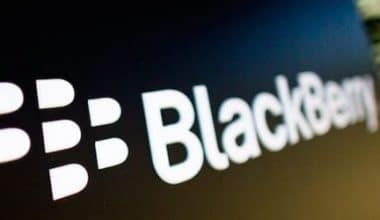The San Francisco 49ers are a world-renowned American football team that has been in existence for more than 60 years. This team won a number of titles and soon became one of the top teams in America, and the 49ers logo appeared to be the best sports logo in history. This article talks about the new 49ers logo and the history of San Francisco.
What Was the Initial Logo for the San Francisco 49ERS?
The original 49ers logo included a mustached gold miner from the 1849 California Gold Rush, clothed in plaid pants and a red shirt, jumping in midair with his hat falling off, and firing pistols in each hand, one nearly shooting his foot and the other producing the word “Forty-Niners” from its smoke.
What Is the 49ERS Symbol?
The current San Francisco 49ers logo is an oval/ellipse with the initials “SF” inside it that references the form of the game ball. The “S” is placed on top and interlocks with the “F” below it to make a monogram.
San Francisco 49ers Logo
The franchise was created in 1946 as a charter member of the All-America Football Conference (AAFC), and joined the NFL in 1949 when the leagues merged. The team began to play in Kezar Stadium in San Francisco before moving to Candlestick Park in 1971 and subsequently to Levi’s Stadium in 2014. The 49ers headquartered was in Santa Clara since 1988.
Between 1981 and 1994, the San Francisco 49ers won five Super Bowls. Four of those occurred in the 1980s, led by Hall of Famers Joe Montana, Jerry Rice, Ronnie Lott, Steve Young, Charles Haley, Fred Dean, and coaches Bill Walsh and George Seifert. Between 1970 and 2021, they were division champions 21 times, making them one of the most successful teams in NFL history.
About San Francisco (1946–1976)
The San Francisco 49ers, an inaugural member of the new All-America Football Conference (AAFC), were the first major league professional sports franchise to begin in San Francisco and also part of the first major league professional sports teams situated on the Pacific Coast. In 1946, the team joined the AAFC’s Los Angeles Dons and the rival National Football League’s Los Angeles Rams as the first three teams in the Western United States to play a “big four” sport, eventually joining the NFL in 1950.
In 1957
The 49ers saw their first consistent success as NFL members in 1957. After losing their first game of the season, the 49ers won their next three against the Rams, Bears, and Packers before returning to Kezar Stadium for a game against the Chicago Bears on October 27, 1957. The 49ers fell behind the Bears 17-7. Sadly, 49ers owner Tony Morabito (1910-1957) collapsed and died during the game.
At halftime, coach Frankie Albert was handed a paper with two words on it: “Tony’s gone.” The 49ers won the game, 21-17, with tears streaming down their faces and a desire to win for their late owner. After the death of Tony, Victor Morabito (1919-1964) and Tony’s widow, Josephine V. Morabito (1910–1995) took ownership of the 49ers. Louis G. Spadia (1921-2013), the 49ers’ special assistant to the Morabitos, became the general manager.
More Information
During the 1950s, the 49ers were famed for their “Million Dollar Backfield,” which included four future Hall of Famers: quarterback Y. A. Tittle, as well as running backs John Henry Johnson, Hugh McElhenny, and Joe Perry. They were the only full-time backfield that came into the Pro Football Hall of Fame.
Except for 1963 and 1964, when they went 2-12 and 4-10, the 49ers averaged.490 for the next 13 years. The 49ers’ key players included running back Ken Willard, quarterback John Brodie, and offensive lineman Bruce Bosley. During this time, the 49ers became the first NFL team to adopt the shotgun formation.
In 1960, the configuration was named for the guy who invented it, San Francisco 49ers coach Red Hickey. The formation, in which the quarterback lines up seven yards behind the center, was designed to give the quarterback more time to throw. The configuration was employed for the first time in 1960, and it helped the 49ers defeat the Baltimore Colts, who were unfamiliar with it.
In 1961
The 49ers started 4-1 in 1961, mostly with the shotgun, including two shutouts in back-to-back weeks. In their sixth game, they met the Chicago Bears, who were able to beat the shotgun and shut out the 49ers 31-0 by bringing men closer to the line of scrimmage and pressuring the quarterback.
Though the 49ers went only 3-5-1 the rest of the year, the shotgun became a staple of most attacks, and football teams make use of it at all levels. The 49ers had a disappointing season in 1962, winning only 6 games. They only won one game at Kezar Stadium, but they won five of their seven away games.
Following a dismal season in 1963, Victor Morabito died on May 10, 1964, at the age of 45. The 1964 season was another flop. According to the 1965 49ers Year Book, Mrs. Josephine V. Morabito Fox, Mrs. Jane Morabito, Mrs. O.H. Heintzelman, Lawrence J. Purcell, Mrs. William O’Grady, Albert J. Ruffo, Franklin Mieuli, Frankie Albert, Louis G. Spadia, and James Ginella were the team’s co-owners.
The 1965 49ers bounced back nicely, finishing 7-6-1. That year, they were led by John Brodie, who returned from an injury-plagued season to become one of the NFL’s best passers, throwing for 3,112 yards and 30 touchdowns. The Morabito widows appointed Lou Spadia as team president in 1966.
San Francisco 49ers Logos In Text
Text-based or wordmark logos are an essential component of every NFL team’s branding. Image-based logos are an excellent way to help fans recognize a franchise. However, wordmark logos are an excellent tool for assisting newcomers in recognizing or identifying team graphics with the name.
Depending on the situation, you can use the wordmark logos alone or in conjunction with the team logo. Many NFL teams employ wordmark logos to reach out to new potential fans. Let’s take a look at some of the text-based 49ers logos from the past.
1972-2004 (The Iconic 49ers Symbol)
The team’s nickname was spelled out in deep red characters in the original wordmark design, which was unveiled in 1972. The characters were red in color, with a white bar separating the outline from the outline.
An additional version with a metallic gold tint instead of the deep red was also developed. It represented the California gold rush and gave the ability of printing on darker mediums without sacrificing effect. The font was a custom design with intricate serifs, making the design highly elaborate.
2005-2008 (The Aesthetic of the 2000s)
The 2005 update of the wordmark logo was done to modernize the look and make it more relevant to fans of that age.
The team moniker was now in dazzling white with thin gold and black outline over a rectangular maroon background in the new wordmark logo. The script for the logo was relatively straightforward. – a bold serif font was used to write the team’s name, with the rest of the name printed in a slightly lower size after the letters 49. Except for the number 49, the rest of the emblem had a shiny gold bar.
Another iteration was also produced, with minor alterations to the design mentioned above. They had to tilt the white characters in this rendition a deep crimson over a white background. This wordmark logo was considerably different from earlier wordmark revisions, making it more appropriate for the mid-2000s design aesthetic.
2009 to the Present (The 2009 San Francisco 49ERS New Logo)
2009 revamp primarily maintained the design the same, with slight adjustments to the color tones employed.
They had to retain the previous two designs, with the sole difference in order to change the designs to a vivid crimson. Furthermore, the logo’s lines were made cleaner and more exact, contributing to its overall visual attractiveness.
A third variant has been added to the roster. This version used the same design as the previous one, but it omitted all hues of red from the logo. The only color now was the black and gold outline of the characters, as well as the gold bar beneath them.
49ers New Logo
Since it has been in use for more than fifty years, the San Francisco Forty-Niners’ present logo has become an iconic image. The logo’s design is famous, with an elongated oval that perfectly represents the relationship between the emblem and the football game.
The initials of the team’s area are prominently displayed in the logo’s center. The gold and black lines that encircle the emblem add a nice touch to the entire design.
The logo’s font was custom-designed, with each letter meticulously hand-drawn. Based on the historical typographic style, the characters had blocky serifs and a bold character weight, which made the typeface visible even from a distance.
This emblem is legendary, and generations of 49ers fans have associated it with the franchise. However, it does not give the San Francisco Forty-Niners’ name credit. The present logo does not correspond to the vision that the franchise’s founders had for the team, which was to pay homage to the 1849 gold rush prospectors.
In that regard, the 1946 49ers logo conveyed the essence and concept underlying the team’s name. The inebriated gold digger leaped around and fired their pistols, wonderfully expressing the gold rush spirit.
So, while the new design complements the team’s current feel, the old logo conveyed the actual essence of the team’s name. Nonetheless, the emblem has become iconic, inspiring a significant fan base known as the “Niner Nation.”
2009 to the Present (The Metamorphosis of the 49ERS New Logo)
The current version of the 49ers logo is identical to the previous iteration. The only difference is the change in the design’s colors.
The proprietors updated the tones of the colors in the logo in 2009, which included:
- The dark red background was changed to rich scarlet color, allowing the other design components on the logo to stand out instead of merging into the background.
- The white letters of the team’s home city’s initials were altered from a drab white to a brighter tint, allowing the letters to shine out even from a distance.
- Similarly, the black and gold colors utilized were more saturated, making them more distinct and aiding in their visibility while outlining the logo design.
San Francisco 49ers Logos Commemorative
Commemorative logos are an excellent method to commemorate noteworthy accomplishments or milestones. They’ve been using it in sports for a long time. For its 100th anniversary, the National Football League produced a new commemorative emblem, which appeared on all player outfits and game balls throughout the 2019 season.
Many franchises use an outside logo design business to assist them in creating commemorative logos that properly depict the essence of the achieved milestone.
1986 Marks the 40th Anniversary of the Team
The San Francisco 49ers celebrated their 40th anniversary in 1986, with a new team logo designed specifically for that occasion.
The new logo monogram design. A brilliant red 40 surrounded by a golden banner with the registered name of the team. Below it was a stylized bar with the team’s timeline, from its inception through the anniversary year. The famed Golden Gate Bridge also crossed the zero from the 40 in the logo.
This design was a terrific approach to celebrate the league’s four decades and to represent their beginnings in the San Francisco area.
1996 Marked the 50th Anniversary of the Team
In 1996, the team celebrated its 50th anniversary, and a new logo was made to mark the event. However, the new logo for the San Francisco 49ers included a shield with four quadrants in alternating metallic gold and red colors.
The upper two quadrants contained five golden diamonds representing the five Super Bowl championships. The year of the anniversary came out in the traditional golden jubilee style. The bottom two quadrants include the team’s initials in the bottom left quadrant and the team’s timeline in the bottom right quadrant. Overall, it is a fitting yet traditional approach to mark a half-century in the sport.
60 Years of Football Playing – 2006
The commemorative 49ers logo debuted in 2006 to commemorate the team’s six decades in the NFL. The design is different from the previous iterations
The new logo was a red oval representing a football, bordered by a black bar that traced and enlarged the oval. Five diamonds depicting NFL championship rings surrounded a white 60 with a black outline. A black fluttering banner beneath the 60 displayed the year the squad began as well as the anniversary year. It is their most eye-catching memorial logo to date.
70 Years of Football – 2016
The 70th-anniversary commemoration logo included a shield with four quadrants outlined in gold and alternating quadrants colored red and white, similar to the golden jubilee logo.
The upper left quadrant was white, with five golden diamonds representing the Super Bowl victories. The last two numbers of initiation and the year of the anniversary came out on the top right red quadrant. The larger quadrants below displayed the number of years the team had been in the league, with the word YEARS printed in white on a thin gold bar beneath the special anniversary number.
Unlike the 50th anniversary logo, which utilized brighter and deeper colors, this version employed lighter and more muted colors.
49ers History
Since their start in 1946, the San Francisco 49ers have used two main symbols for their logo: the gold digger character firing a gun and the oval form with the monogram. Allen Sorrel, who had joined with Anthony J. Morabito to acquire the team, designed the inaugural San Francisco 49ers logo.
1946 — 1967
The original San Francisco 49ers emblem, designed in 1946, featured a red, black, and white depiction of a man holding a bottle in one hand and a gun in the other. However, the man’s feet were shooting and numb, and his hat was sliding off his head. It was a fantastic and exciting visual identity design that distinguished the team from its competitors and showed its innovative and forceful individuality.
1968 — 1988
The club abandoned the colorful image of a man in 1968 for a new visual identity. However, the new logo included a football-shaped oval frame, a red background, and a white “SF” monogram. The insignia, in black color, was laconic yet lovely and powerful.
1989 — 1995
The black border of the symbol got smaller with the redesign in 1989, and the letters of the monogram gained a delicate shape, making the contrast between the inscription and the background stronger and sharper.
1996 — 2008
In 1996, the 49ers’ visual identity’s color palette was updated by darkening the red hue and adding a faint gold tone to the frame. In terms of the monogram, in the new edition, “S” overlapped “F,” and both symbols’ outlines were bolder than in the previous version.
2009 — Today
In 2009, the gold outline was deepened, making the red part of the badge smaller, but the “SF” monogram in white and black became larger and more assertive. The curves of the lettering and the shape of the badge itself, as well as the famous emblem’s color palette, remained unchanged.
The San Francisco 49ers’ History
Anthony J. Morabito is largely regarded as a West Coast sports pioneer. When he introduced the 49ers to San Francisco in 1946, they were the first major league sports franchise.
Morabito had that the Bay Area was ready for an NFL pro football team after WWII. This is because the Bay Area was already a college football in Mecca. Thousands of people packed Kezar Stadium to witness teams like the Stanford Wow Boys, the University of San Francisco, and the University of California-Berkeley.
Morabito saw the game’s popularity grow in the area and talked with NFL officials to discuss the formation of a new club. That was back in 1942. He was, however, gently declined. In 1944, he tried again, this time with a few business associates. They traveled to Chicago to submit their case to NFL Commissioner Roger Goodell. The NFL did not have a club in the west of Chicago at this point, and they had no desire to change their geographical vision, so they turned down Morabito once more.
The team had to connect Morabito with Arch Ward the sports editor of the Chicago Tribune who was planning a rival league, the All-America Football Conference. Morabito was sold after meeting Ward.
However, the first meeting of the new league took place in St. Louis on June 6, 1944. Morabito agreed to organize a San Francisco team in a league that would not operate until the war was over.
This was around the start of World War II, and Morabito agreed to organize a San Francisco squad for the league, which would begin after the war.
1946-1949: The AAFC’s Formative Years
In 1946, the 49ers began their professional football career in the All-America Football Conference. However, they held the distinction of being the first West Coast team to compete in the four major sports leagues.
Tony Morabito had sought to get into the NFL, but the AAFC allowed him and his team to use air travel and compete in a national league. Early 1940s air travel convinced Morabito to expand the NFL to the West.
The 49ers were in the same division as the Cleveland Browns, whose dominance they couldn’t overcome. They had been responsible for two of the Browns’ four defeats but had finished second each time.
They were, nevertheless, the AAFC’s second-best team in those early years. The 49ers joined the NFL in 1950, along with the Baltimore Colts and Cleveland Browns.
Transferring to the NFL
After leaving the AAFC for the NFL, the management team remained intact, overseen by co-owners Anthony J. Morabito and Victor P. Morabito, as well as General Manager Louis Spadia. Throughout the 1950s, however, the team struggled to achieve great success.
In the 1960s, the 49ers
The 49ers were the first club in the NFL to use the shotgun formation in the 1960s. Red Hickey came up with the idea for the band. The quarterback would line up seven yards behind the center with this strategy, giving him extra time to pass through.
However, the 49ers were able to overcome the Baltimore Colts with this formation, which stunned them. The 49ers have failed to win a major championship by the end of the decade.
In the 1970s, the 49ers
Between 1970 and 1972, the 49ers flirted with championship status three times. They won the Western Conference title in each of these seasons but didn’t win in the championship and playoff games with the Dallas Cowboys. The club also moved from Kezar Stadium to Candlestick Park, which seats 68,000 people, in 1971.
After suffering for several seasons, Edward J took ownership of it. DeBartolo Jr. in March 1977, ushering in a new era. However, DeBartolo established the goal of assisting the 49ers in winning their first league championship. Bill Walsh, an offensive expert, became the new head coach. Walsh’s 26-21 victory over Cincinnati in Super Bowl XVI would win him his first championship in just three seasons.
More success followed in the years that followed, including a stunning last-second Super Bowl XXIII victory over Cincinnati, 20-16. Walsh has won six NFC West championships and three Super Bowls in his ten years as head coach.
In the 1980s, the 49ers
The San Francisco 49ers had a roster full of youthful talents in the 1980s, including Joe Montana, Jerry Rice, Dwight Clark, Ronnie Lott, and Roger Craig. George Seirfeit had taken over for Walsh and had proceeded to exploit the talent at his disposal.
The 49ers’ effective personnel planning allowed them to replace retiring veterans with strong young players. An example is Steve Young, who replaced Montana’s quarterback and suffered from injuries.
Seifert was a two-time Super Bowl champion with the 49ers. However, the first was a 55-1 victory over the Denver Broncos in Super Bowl XXIV, and the second was a 49-26 victory over the San Diego Chargers in Super Bowl XXIX.
The History (From 1999 Through 2010, the 49ERS Were in a Downward Spiral)
Several management issues contributed to the 49ers’ decline during this time period. One high-profile case involves a casino owned by Louisiana Governor Edwin Edwards. After pleading guilty to felony failure to report in 1998, he was barred from running the club for a year. Denise DeBartolo York, his sister, took over the club with the support of her husband, John York. Denise became the chairperson of the board, while John was the CEO.
DeBartolo returned to the leadership after his suspension, but family squabbles involving lawsuits forced him to hand over ownership of the club to the Yorks as part of the settlement deal.
2017-Present 49ers
The Kyle Shanahan era officially began in 2017. The 49ers started the new era with nine straight losses before finally winning against the New York Giants. However, after signing quarterback Jimmy Garoppolo at the end of October 2017, the team’s fortunes improved. However, the 49ers won their first five games under Garoppolo, a winning streak that led to a 6-10 season conclusion.
The 2018 season began with the team in turmoil when Garoppolo tore his ACL in late September. Many additional players were injured throughout the season, causing the 49ers to finish 4-12.
Elements of the 49ers Logo Design
The 49ers logo has an ellipse shape, from the game’s ball. In comparison to previous incarnations, the current elliptical representation is wider to match the true size of the ball.
49ers Logo Font: The initials “SF” are a monogram with a custom typeface, a serif that can classify as antique. The letters are handwritten rather than typed, adding to the team’s distinct and recognizable brand identity.
The 49ers logo is white with a thick black outline and a dark shadow effect. However, the oval center is a bright red, with thick gold outlines encased in a thick black border.
What Is the 75 Patch on 49ERS Uniform?
To commemorate their 75th anniversary, the 49ers released the 75th jersey patch for the 2021 season. San Francisco wore these 49ers jerseys during the NFL’s 75th anniversary season in 1994 when they overthrew the San Diego Chargers in Super Bowl XXXIX.
Why Is the 49ers Mascot?
Sourdough Sam is the NFL’s most popular mascot. Sourdough became the 49ers’ official mascot after winning gold at Candlestick Park in 1994. However, Sourdough Sam is a gold miner who enjoys entertaining the 49ers fans at every home game.
Conclusion
The San Francisco 49ers (formerly the San Francisco Forty Niners) are an NFL franchise based in the Bay Area. The prospectors who landed in Northern California during the 1849 Gold Rush inspired the team’s name. They excel at their sport and continue to improve as the years pass.
Related Articles
- Finance Jobs New York City: Best 15+ Options in 2023 (Updated)
- GOLDEN STATE WARRIORS LOGO: Meaning, Tickets, Rumors, and History
- NFL Pension: The 2023 Ultimate Guide (Updated)
- Gold As A Financial Investment: 4 Things To Know
- HOW MUCH DO CAR MECHANICS MAKE: Car Mechanic Salary in 2023
- NFL LOGO: Meaning, Evolution, and History
- BEST STATES FOR CLIMATE CHANGE 2023
- (Opens in a new browser tab)Affiliate Marketing Salary: Average Salaries In 2023
- (Opens in a new browser tab)CISCO LOGO: Its Meaning, Historical Changes and Designer
- USC LOGO: The History and Facts About USC.
- USC LOGO: The History and Facts About USC.(Opens in a new browser tab)(Opens in a new browser t






